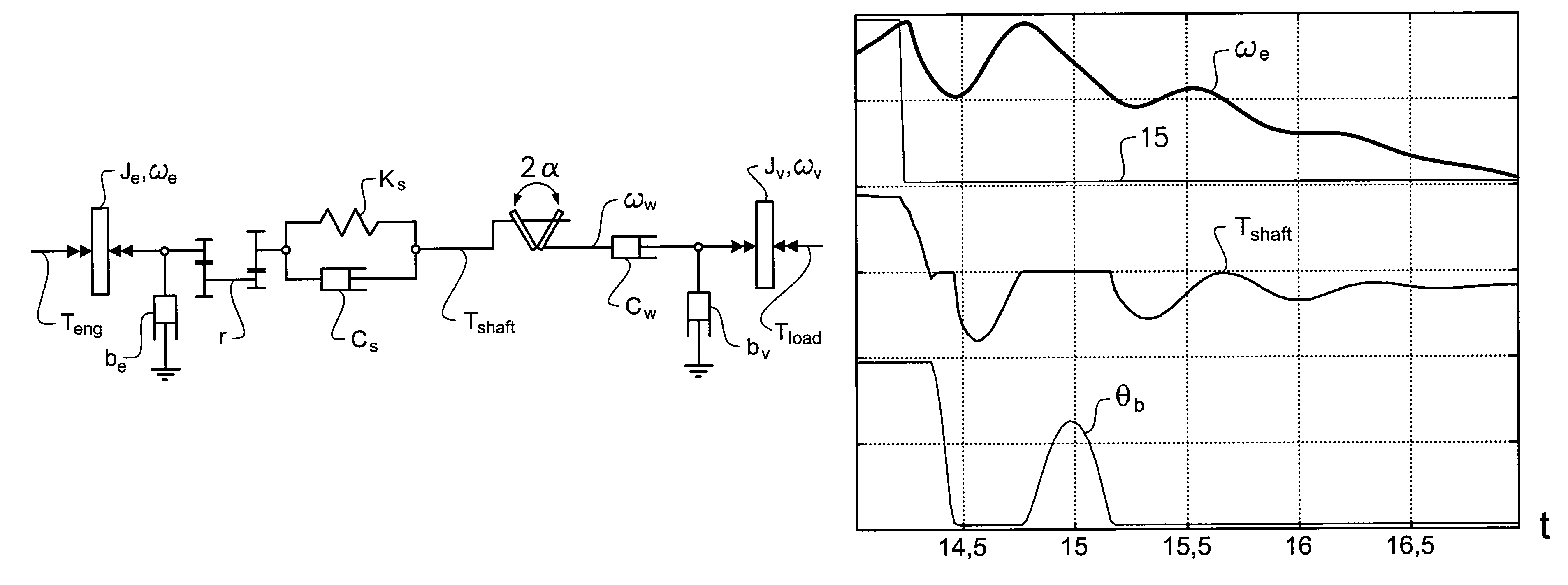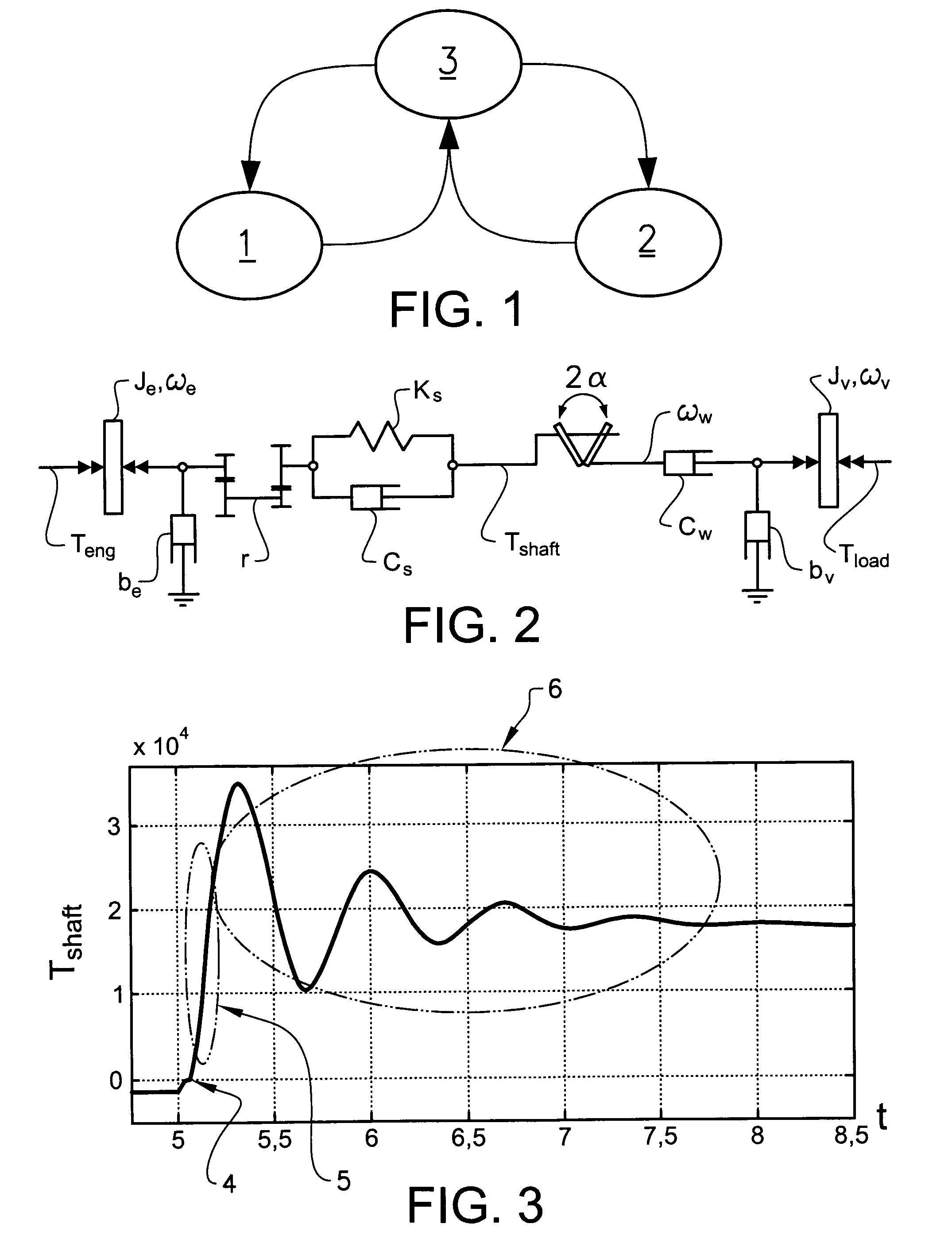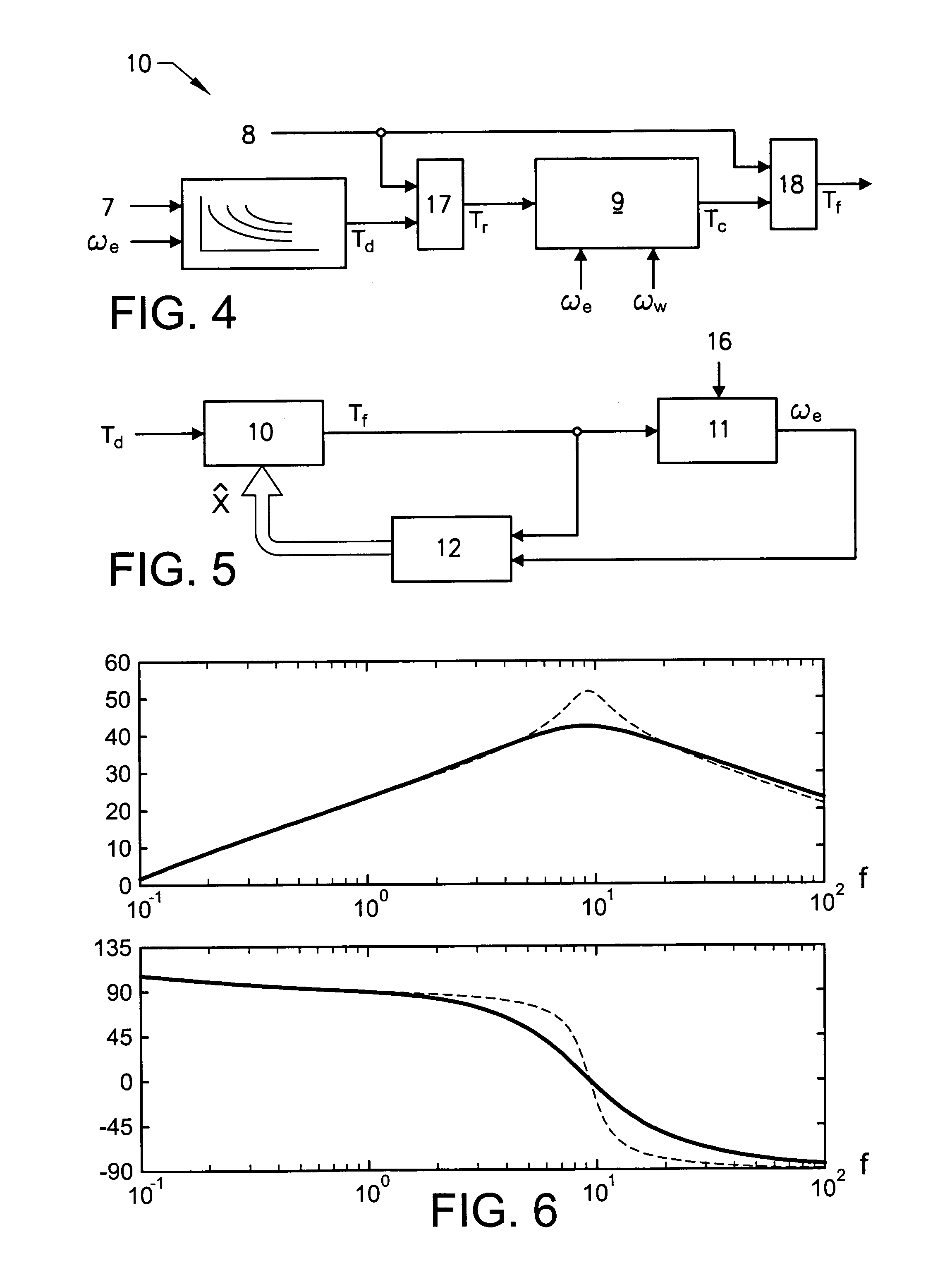Method and controller for controlling output torque of a propulsion unit
a propulsion unit and output torque technology, applied in the field of controllers for controlling output torque of propulsion units, can solve the problems of negative effects on perceived vehicle drivability, vehicle longitudinal tractive force variations, vehicle powertrain also includes inevitable backlash, etc., to minimize driveline oscillations and minimize driveline oscillations
- Summary
- Abstract
- Description
- Claims
- Application Information
AI Technical Summary
Benefits of technology
Problems solved by technology
Method used
Image
Examples
Embodiment Construction
[0023]The inventive method and torque controller for controlling output torque of a propulsion unit uses a closed-loop linear-quadratic regulator (LQR) based torque controller for damping driveline oscillations in an automotive driveline. The developed controller has the attractive feature of fitting very well into the archetypical heavy truck engine control system of today, being based on torque control. Thus, the controller can easily be incorporated as an additional torque compensator. The inventive method and controller is suitable for controlling output torque of different types of propulsion units, such as diesel engines, spark ignition engines, and electric motors. The torque control of the LQR controller is particularly advantageous for propulsion units having fast torque response, such as a diesel engine, because of the optimal control with respect to quick response to driver torque demand while maintaining good damping of driveline oscillations.
[0024]The controller damps d...
PUM
 Login to View More
Login to View More Abstract
Description
Claims
Application Information
 Login to View More
Login to View More - R&D
- Intellectual Property
- Life Sciences
- Materials
- Tech Scout
- Unparalleled Data Quality
- Higher Quality Content
- 60% Fewer Hallucinations
Browse by: Latest US Patents, China's latest patents, Technical Efficacy Thesaurus, Application Domain, Technology Topic, Popular Technical Reports.
© 2025 PatSnap. All rights reserved.Legal|Privacy policy|Modern Slavery Act Transparency Statement|Sitemap|About US| Contact US: help@patsnap.com



